
“I’m on vacation in the wilds of northern Canada.”
Jovanka Vuckovic almost sighs the words with euphoric relief. She has good reason: after months of effort, her debut film Riot Girls finally ascends from the festival circuit onto a wide release September 13. Vuckovic began as a visual effects artist on TV series like Foreign Objects before acquiescing to publishing where she spent the better part of a decade as editor of Rue Morgue Magazine, Canada’s chief periodical on the horror genre.
Now, Vuckovic steps into the filmmaker arena with Riot Girls, a story of a post-Apocalyptic alternate 1995 where a mysterious disease wipes out everyone over the age of 18. In a small town, society functions under the despotic Jeremy (Munro Chambers of Degrassi: The Next Generation), whose iron grip becomes ever more violent. Standing against him is a small band of resistance fighters led by the queero Scratch (Paloma Kwiatkowski) and her girlfriend Nat (Madison Iseman). Can the lesbian heroines survive the woes of adolescence and free the city?
After months of chasing, Queerty finally scored some time with the affable Vuckovic to talk about the film and her intentions in making it. Riot Girls hits select theatres and streaming services September 13.
How about we take this to the next level?
Our newsletter is like a refreshing cocktail (or mocktail) of LGBTQ+ entertainment and pop culture, served up with a side of eye-candy.
I have to say, I didn’t know what to expect going into this.
You know, a lot of people are very unsure of what to expect because of my background. It’s all horror, right? Riot Girls is not a horror film. So I think a lot of people are just not sure what Riot Girls is.

Well, I don’t know that this is a far cry from a horror film. But let’s talk about that in a moment. This is your first solo feature. How did Katherine Collins’ script come to you?
Katherine had written the script, I guess 12 years ago.
Oh my. Wow.
It was at the Canadian Film Center. She and the producer, Lauren Grant, were coming up together. They were at the CFC together. The two of them were collaborators in film school. She had this script that she’d been trying to get made. A lot of male producers that read it didn’t get it. They didn’t see what I saw. They saw hey, rewrite this and make it more like ‘Hunger Games’ but with steamy lesbian sex scenes.
[Laughter]
But when I read it, I was like, that’s not what this is. This is a more fun teen film. It’s not at all about what they were trying. I guess that’s what people do: when they see something new, they try to make it into things they already know.
Certainly. And when it comes to same-sex content, I think that’s very true. This is a bit of a digression, but you know, I interviewed Olivia Wilde earlier this year, and she talked about how when she would do bisexual or lesbian sex scenes on The OC, the crew would call them “Girl on Girl” scenes.
Oh, gross. And that’s not really a digression. It’s part of this whole conversation we’ve been having about women, and particularly queer women. Katherine’s queer, and she wrote this kind of about herself. She and I are around the same age, and so we were teens around the same time in the 90s. She had seen Tank Girl, which had a big effect on her. That comic book, even though it was written by men, [Tank Girl] became a huge queero.
Absolutely.
That inspired Katherine to write a story that was a teen adventure film, but to have this character and have her queerness be matter-of-fact. It’s ubiquitous, and it’s not about coming out. Not that those stories aren’t valuable, but we need more of these kinds of narratives too, where the queerness is ubiquitous and becomes normalized. So that was the goal. When I got on the phone with them, I said “Here’s the way I see this. We should take out all the stuff that the previous male producer suggested and make this a fun 90s throwback.” We’ll make it full of 90s riot girl music. We’ll make it fun. And everyone agreed. That’s how I got the job: I understood what Katherine was trying to do.
That’s terrific.
And it’s going to surprise people as much as it surprised me that my first feature is not a horror film. It suited my f*ck you feminist [sensibility]. I wanted to make films that don’t just belong to one group of people. That stuff is very important to me—representation.

The representation comes across in the movie, and the f*ck you attitude as well. That’s the attitude of some of the characters, obviously. So when you got the script, what suggestions did you make?
Yeah, for sure. Most of it was stuff she wanted to get rid of anyway, like the old notes from previous producers. Nobody had a problem when I suggest a character that only existed to get f*cked by Jack. Nobody had a problem when I wanted to give Sunshine more agency. If I had my way, because I’m a horror person, I’d have violence every ten minutes.
[Laughter]
But that’s not the story she wrote. The story she wrote is a balanced story about the two gangs, the east vs west, poor vs. rich. I really So the stuff I pushed for was, not surprisingly, more violence and more of our riot girls, and this comic book conceit I brought to it, to make it feel like it’s an underground comic from the 90s. I was thinking about movies like Warriors.
Walter Hill’s movie? Yeah.
It immediately tells you from frame one this is an invented world. We’re meant to have fun and not take stuff too seriously. Class of 1984. There’s a film called Over the Edge; it inspired Richard Linklater to make Dazed and Confused. Those kinds of cult films. I had this list of movies for inspiration and a riot girls playlist to inspire people to work on the film to right away give them the flavor.
The style you adopt, using comic book framing—the screen turns into different panels, some of which are illustrated. That’s a great approach, because it tells the audience this is a heightened reality. It’s a fantasy.
Exactly. The goal was always to have fun.
With it being set very firmly in 1995, though I’m not sure that ever is explicitly said. I’m guessing that’s deliberate since it was also the height of Riot Girl bands like Babes in Toyland, Veruca Salt, and Hole. Why set the film then as opposed to now?
The title is obviously a nod to the feminist punk movement of the era, but it’s not about that era of music. I just suggested we set it in that era because it made sense. It made sense for me and Katherine because we were that age at that time. And, we didn’t have to deal with cellphones. We had…remember beepers?
Pagers. We called them pagers.
[Laughter]
I do remember them. So, the whole east side vs. west side is very indicative of the “wrong side of the tracks.”
For sure. In this case, it’s a bridge.
You have the west siders, and they’re all very preppy, very affluent. The east siders are poor, so it feels like class warfare. It adds to the whole idea that it’s a metaphor like Lord of the Flies.
Exactly.

The villain of the piece, Jeremy, is quite interesting in that he’s able to manipulate an army, so to speak, out of teen boys insecure in their masculinity. You could say the same thing about Trump. Is this something learned or inborn to the male gender?
Oh God, wow. It was definitely a conscious choice; I’m familiar with these kinds of bullies. I’ve seen them. I’ve grown up around them. We all know that personality type. And absolutely it’s learned. Children don’t wake up…maybe Jeffery Dahmer would be an exception…
Oh lord!
[Laughter]
Children don’t wake up deciding they want to be a mean-spirited *sshole. Aversive judgment is taught. So, that’s definitely who Jeremy is. We actually talked about how Jeremy has some really good qualities if you think about it. He’s taking care of everybody. But, he’s getting the disease that’s talked about in the framing device—the black rot. It happens to people whenever they turn 18, during the transition from child to adulthood. Jeremy, because he’s the oldest kid, he’s starting to get the gut rot. He starts to lose control. So the bad news is none of them will get out of this alive.
[Laughter]
When they turn 18, they are going to die.
And you say this is not a horror film?! Good lord.
Right? It’s only there if you figure it out. But none of the kids are going to make it. It’s all about how you choose to spend your time. Life’s short. Try not to be an *sshole.
Words to live by. But with your background in horror, there’s another gender issue that is quite provocative. The other gender element in the character Scratch. Paloma Kwiatkoski really commits to the role, and she has an almost androgynous quality to her. This came up recently with several horror directors we’ve talked to: that the Final Girl, the heroine or the Final Guy in some cases, almost transcends gender.
That’s fascinating. You’re staying there’s a trend? I haven’t noticed one.
You can draw the line between a character like Ripley in Alien, or Nancy in A Nightmare on Elm Street, or Jesse in A Nightmare on Elm Street 2—they’re masculine and feminine at the same time. Scratch is like that too. She’s nurturing and empathetic, but she’s also aggressive and strong and cunning. What statement do you want to make with that?
When it comes to Paloma as Scratch…one of the problems I have when I say I want depict women as people in the movies is that even the Final Girl is a trope at this point. She’s not a real person. It’s now just a collection of qualities, like you pointed out.
Related: ‘Scream Queen’ creators on why ‘Freddy’s Revenge’ is the most homoerotic horror film ever
Interesting.
For me, because I get a lot of scripts and 90% of them depict women very poorly, and when they’re trying, it’s someone trying to write a Final Girl. That misses the point: women are people. When I say I’m a feminist horror director, I just want to depict women as people with all our complexities. With Scratch, she was always on the page written as she is: tough as nails, but with a soft underbelly for Nat. I always read her as possibly genderqueer. When Paloma came in and auditioned, the first thing she asked me was “Do you think she’s non-binary?”

Impressive.
Right? And in the 90s, when I was a kid in a small town, it would have been impossible for someone like Scratch to be an out non-binary person. It was impossible. So we had a lot of great conversations about that, and [Paloma] brought that to the role. I really loved it. I like the realness of that. So much TV would love for us to believe the world is predominantly white and straight. As you and I both know, that’s not the f*cking world we live in. As storytellers, we need to do better. So the Final Girl isn’t enough for me. We have to try harder. I know when Katherine wrote her, she told me she was writing her as a tomboy-femme. But for some reason when I was reading her, I was thinking she was non-binary. Other characters written as male in the script, we just cast women.
Oh really?
I didn’t want the leader of the resistance on the west side to be a man. So, we cast Jenny Raven in the role of Caine. These subtle choices that you make as a director…progress, sometimes, you have to get away with it by [doing something subtle]. We tried very hard with Riot Girls to prioritize diversity. But I’m going to keep thinking about your comment about the Final Girl. That’s really fascinating to me.
Well, and it’s everywhere. The horror documentary Scream Queen about Mark Patton really delves into it. And it goes beyond horror I talked to Billy Porter recently, and he said if a woman puts on pants she looks powerful. If a cisgender man puts on a dress, people are horrified.
Which is why movies like Sleepaway Camp are so offensive.
Absolutely.
They are so offensive. And a lot of people still don’t get it. A lot of early horror guys still can’t step outside themselves to see why that movie is so offensive.
One of the most transphobic movies ever made.
Absolutely.

Along those same lines, you are a big fan of Vampira.
I went to her funeral, yeah.
I mention her because Maila Nurmi who created her always said Vampira was androgynous. She called her a woman, but said she didn’t really have a gender—she was a mix of masculine and feminine qualities of power and sensuality. It’s interesting that this is so recurrent in horror characters, and how that character is usually a hero.
I love it. You should write an essay about it. I’m dying to read it.
If I have time. So what’s next for you? Do you have any plans to revisit the world of Riot Girls?
Well, there’s no plan yet for any kind of further exploration of that world. I have my own personal scripts that I’ve been developing, so I want to move back into that genre space and continue to my goal of breaking apart genre films and remaking them. It’s a huge part of my creative impulse to redefine women in these spaces. Having studied horror films so many years, I can say with authority there is a major problem. The horror genre is in dire need of different perspectives. So I’m already moving back into that space and developing horror thrillers. I’m just going out to cast a feminist psychological thriller that I wrote.
Ooh.
It’s called All My Heroes Are Dead. It’s about a woman who has terminal brain cancer and has to kill five people in order to live. I’m dying to go really dark. The great experience of Riot Girls was that it taught me I don’t just want to do horror. I used to say I would never do a movie about teenagers, and…
[Laughter]
And it’s your first movie.
Sometimes opportunities present themselves. So I’ve expanded my workspace into genre films in general, which would include this queer teen apocalypse film.
Riot Girls hits select theatres and streaming services September 13.


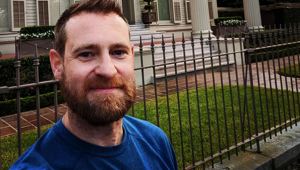
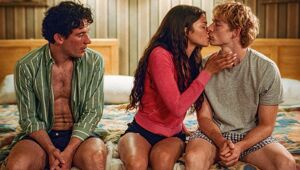



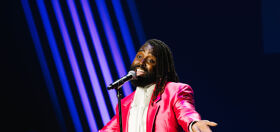
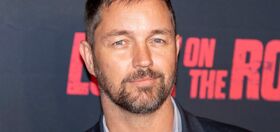
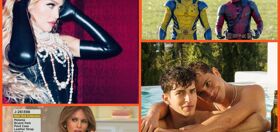




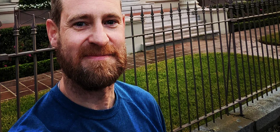

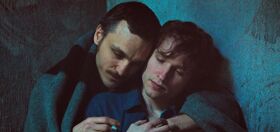


rustyiam
Is the goal to be “ bada*s”?